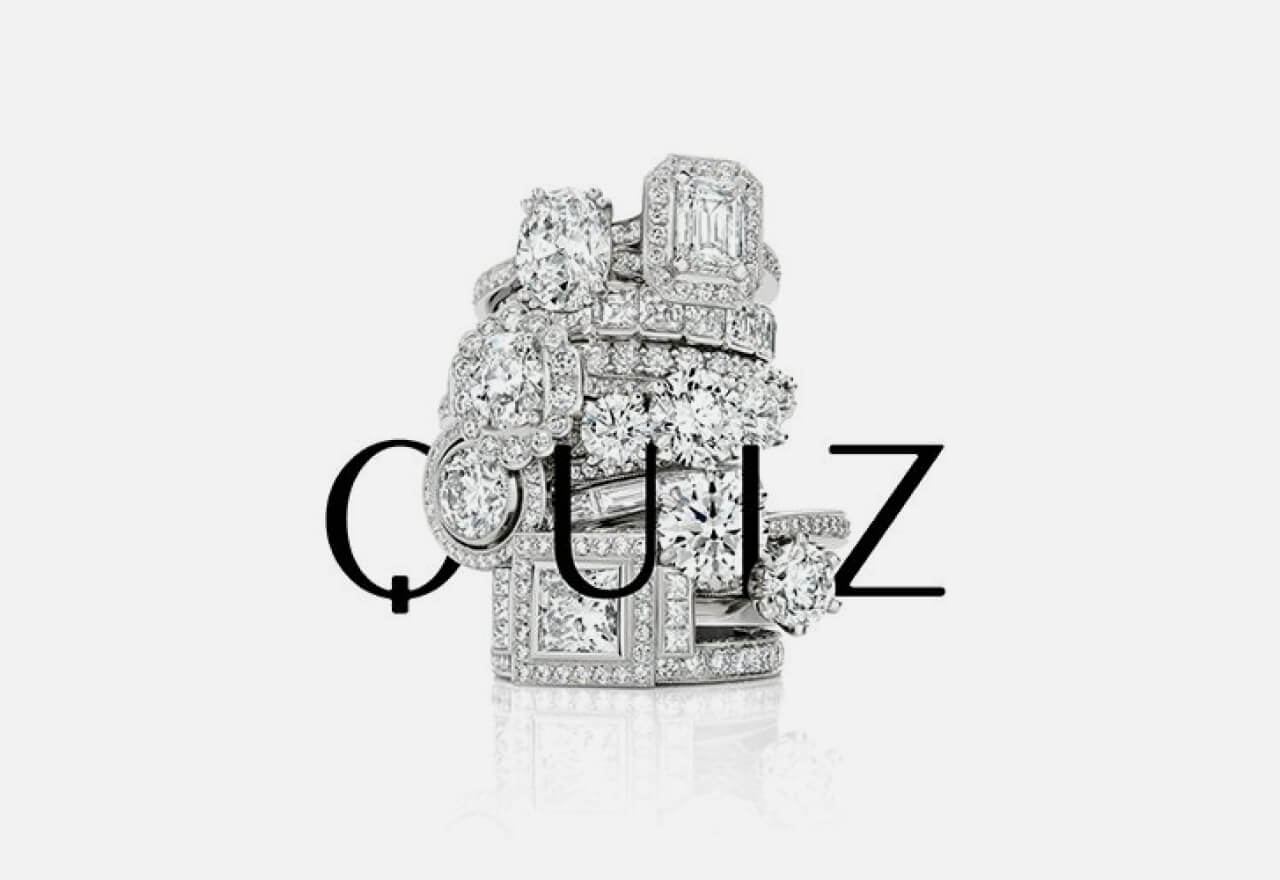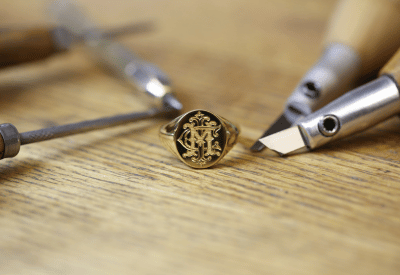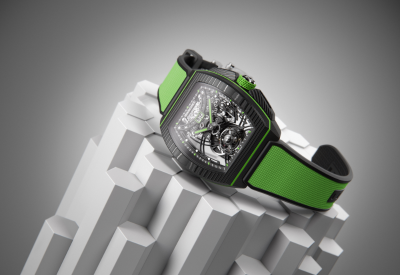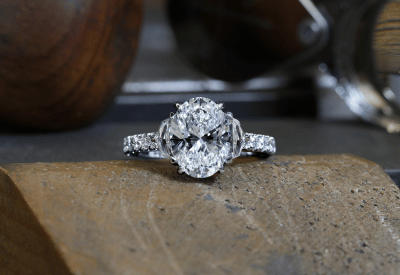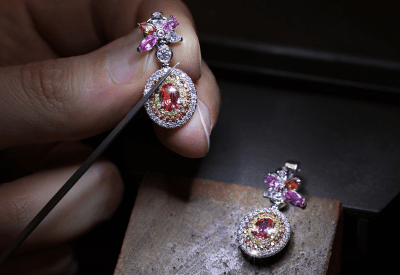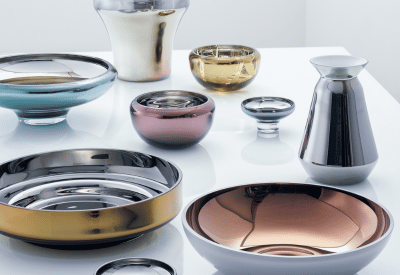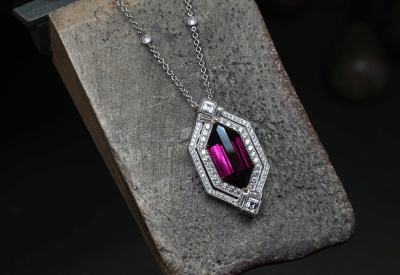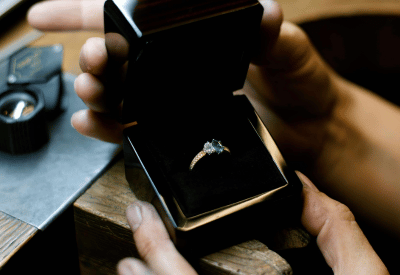When it comes to diamonds, it’s said that the diamond cut is the most important characteristic of the 4 C’s. Often mistaken to describe solely a diamond’s shape, cut also refers to the diamond’s proportions, symmetry and polish. In fact, it has the biggest influence on a diamond’s overall appearance and beauty. When cutting, the cutter must balance optimal cut, which determines appearance, against maximum yield, which ensures the diamond maintains as much carat weight as possible from the rough stone. The problem is, however, that many people focus on carat rather than cut, and are happy to settle for a larger, fair-cut diamond rather than a smaller, well-cut one.
The are seven cut quality factors that can affect a diamond’s cut grade.
THE THREE MAIN ELEMENTS
There are three main elements when it comes to appearance: brilliance, fire (dispersion) and scintillation.
BRILLIANCE
Diamond brilliance is so important – it is the life of the diamond. A brilliant diamond will explode with light, creating an eye-catching sparkle in your engagement ring. But what exactly is brilliance? It refers to the reflection of white light from the surface and the inside. Essentially, light enters through the table (the top) of the diamond and travels to the side facets, where it reflects internally from one side to the other before returning to the table of the stone as brilliance.
If the cutting is poor then the brilliance is sacrificed, so be sure to choose a diamond that has been well cut. At Fairfax & Roberts we source diamonds of the finest quality of cut, and they reflect the utmost brilliance and scintillation.
FIRE
Fire, which is often referred to as dispersion, details the way the light disperses into the colour spectrum within the diamond. As light exits the diamond, dispersion causes the white light to be separated into multiple colours and this rainbow of colours is then reflected back into the eye.
SCINTILLATION
Scintillation refers to the sparkle of the diamond, created by the play of light as the diamond, or the person viewing the diamond, moves. It is determined by how shallow the diamond is cut.
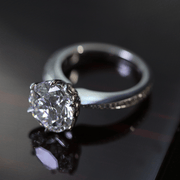
The remaining factors
The four remaining factors and how they affect the grade of a diamond cut are:
WEIGHT RATIO
The weight ratio is the analysis of a diamond’s weight in relation to its average girdle diameter. A diamond should not weigh over what it’s face-up size indicates.
DURABILITY
The durability of a diamond cut describes the amount of potential damage that could result from unusually thin girdles or points; essentially it grades what makes a diamond susceptible to damage during normal wear.
POLISH
The polish of a diamond cut describes the overall condition and quality of the facet surfaces of a finished diamond, including any blemishes that may have been caused during the polishing process.
SYMMETRY
The symmetry evaluates how exact the finished diamond’s shape is symmetrically.
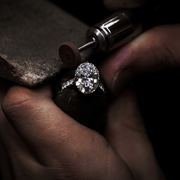
Proportions of diamond cuts
A diamond is cut according to the size, shape and angle of each facet. These form the proportions and, while a wide range of combinations will occur, the proportions will ultimately determine how the diamond interacts with the light.
Importantly, 20% of light will immediately reflect off the surface of the diamond when the light strikes. For the other 80%, the way the diamond is cut will directly determine whether the light escapes totally from the top or whether the reflections are more spread out through the side and bottom of the diamond.
When cut with proper proportions, light returns out of the top of the diamond as it is reflected, ensuring the brilliance is in perfect balance with the dispersion of the light. The light strikes each facet of the diamond at the best angle possible, allowing the most light to reflect back from the top.
If cut too shallow, the light will leak from the bottom. In this case, light enters the diamond and moves straight to the bottom because the angles are too low. The light passes through the facet rather than reflecting off it.
On the other hand, diamonds that are cut too deep allow the light to escape from the side. The light enters the diamond but reflects at a very sharp angle, bouncing off the rest of the diamond at too low an angle. This means the light escapes through the bottom and side of the diamond, rather than the top.
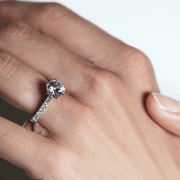
grades
The cutting grade of a diamond is based on the reflective properties of the diamond. The best cut diamonds are within the top ranges that maximise brilliance, dispersion and scintillation.
The cutting grade of a diamond is divided into the following:
EXCELLENT
Classified as an exquisite cut, an excellent diamond produces the highest level of brilliance ensuring nearly all of the light entering the diamond reflects back through the top, creating exceptional sparkle and life. In terms of brilliance, an excellent cut produces an exceptional level.
VERY GOOD
The cut may not be perfect, but still most of the light entering the diamond reflects through the top. A very good diamond ensures a level of very high brilliance.
GOOD
Still very bright and reflects most of the light that enters the diamond, albeit not as good as the higher cut grades.
FAIR
A fair cut is when a diamond has been imperfectly cut so the light is lost easily through the sides and bottom, resulting in a duller diamond.
POOR
A poor grade is a result of a diamond being cut far too shallow or too deep. The diamond will lose a lot of light and appear noticeably duller.
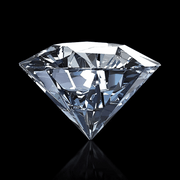
when choosing
Most jewellers will tell you to place a higher emphasis on cut than anything else, as it has a direct impact on the magnificence of the diamond.
in fact, it’s best that you choose the highest available cut grade within your budget
This is purely because a poorly cut diamond, regardless of the colour or clarity, will still appear duller, as the light will not reflect properly. A well-cut diamond, on the other hand, will still sparkle and shine, even if the clarity or colour is not as high.
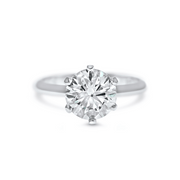
However, for those on a budget there are stil options, especially if the main concern is size
A diamond that is classified as fair or good may still be a respectable choice. Even though the diamond may lack in scintillation and brilliance, the size can be increased for the same amount of money. This is especially the case when it comes to different shaped diamonds.
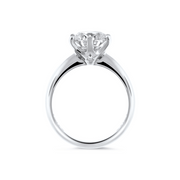
Always avoid poor cut diamonds
This is purely because a poorly cut diamond, regardless of the colour or clarity, will still appear duller, as the light will not reflect properly. A well-cut diamond, on the other hand, will still sparkle and shine, even if the clarity or colour is not as high.
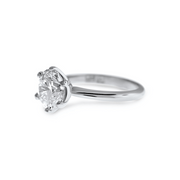
CUT EXAMPLES
Each cut is distinctive in its own right, and the most common types of cuts for engagement rings can be seen below.
![]()
ROUND CUT
![]()
EMERALD CUT
![]()
RADIANT CUT
![]()
CUSHION CUT
![]()
OVAL CUT
![]()
HEART CUT
![]()
PEAR CUT
![]()
ASCHER CUT
![]()
PRINCESS CUT
![]()
MARQUISE CUT


